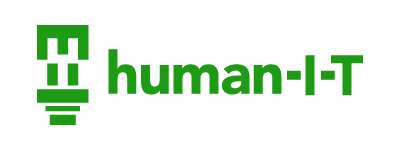Over the last decade the idea of design equity has permeated throughout various organizations that extend from startup companies to world renowned universities. The process of design equity focuses on creating and executing ideas that solve persistent social challenges in education, the workplace, urban spaces and beyond. By placing people at the center of solutions we can directly impact the well-being of our communities.Scaling this school of thought is on the mind of Moss Pike, the Director of Educational Technology at the Vistamar School in El Segundo, California. He works with students to provide them with a designed-based computer science curriculum that supports their academic and professional growth in the learning process. Vistamar’s mission to education focuses on equity and inclusivity of their programs, which integrates innovative practices with a global perspective. Discovering this aspect of Vistamar led Moss to “combine his various interests in technology, in education and leadership” to help propel Vistamar forward. It’s part of a larger plan to “innovate around the learning process by using technology” Vistmar’s mission is reflected in their Civic Engagement Day, which is designed to motivate 10th grade students “to think about real world problems and work on creating more equity in the world.” says Moss. With the Civic Engagement Day program, students focus on developing solutions for issues that are often overlooked.
He also mentions that “most of the time solutions cover the symptoms and not the actual problem itself.” With Civic Engagement Day students focus on the root of the a problem and ideate on actionable ways solve it. “It’s centered around the design thinking process. It’s a cycle that starts with an empathy or discovery phase where you try to get a sense for the people affected by a problem,” Moss says. human-I-T recently attended Civic Engagement Day to highlight their work on the digital divide and re-purposing unwanted technology for low-income households.“The ideation and discovery of what the problem was occurred when [we took] two problems; E-waste and the digital divide,” says Brandon Smith, Vice President of Sales at human-I-T. E-waste or “electronic waste” comprises of electronics that are old, obsolete or broken that can’t be used anymore. The digital divide is defined as those who have access to technology and the internet and those who don’t have access.
In addition, over “74% of all electronic waste is sent to landfills” and accounts for 70% of our toxic waste.. At the same time nearly 30 million Americans lack access to technology and high speed internet access. human-I-T’s solution started by taking unwanted technology that no one was using, re-purpose it, then distribute it to families that needed it the most. Brandon states that prior to this “there are two things that happen to E-waste; first you send it to a recycler where they put it in a grinding machine, then it gets shredded.” Secondly, this shredded material is sent to other countries where people take out the rare metals to sell.”
This impacts the well-being of communities by negatively affecting their health and damaging the environment. The design thinking process is one of the most influential models for problem solving to date. It’s a part of the core model for companies, such as Amazon and Apple that use is to develop new products and services. Different organizations have a various number of stages, but all of them follow this path as outlined by the Interaction Design Foundation:
1st is the empathy stage: You work to understand the experiences that people are facing, This stage it considered crucial to gaining empathy about the problem.
2nd is the defining stage: After observing and developing an understanding in the previous stage you begin to define the problem itself. This stage helps members of your team create ideas in the following stage.
3rd is the Idea stage: You begin generating ideas from everything you analyzed up to this point.
4th is the Prototype stage: This stage produces a basic version of the idea you have.
5th is the Testing stage: Here you put your idea through rigorous testing to of its key elements to ensure it functions they way it should.
Understanding how the discovery phase works helps students define the problem itself, then ideate on ways to solve for it. From there Moss says that “we teach them how to see problems that may not have been identified before and work towards solving them in meaningful ways.” Inviting human-I-T for Civic Engagement Day shows students how the discovery phase is applied in a real world scenario. Once the students have a greater understanding of the problem they can start on ideating solutions and testing them.
Problem solving is one of the most challenging aspects that organizations and people face everywhere. Moss says that “just learning how to problem solve is a huge skill to have” when focusing on core issues that are affecting people. When it comes to civic engagement, applying the design thinking process is a critical first step to empathize with the direct causes of social problems.
More information:






